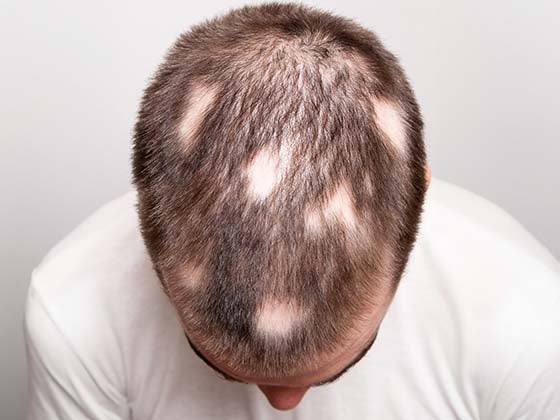- Working of Niacinamide
- Benefits
- Skin Purging
- Purging v/s Breakouts
- Reasons of Purging
- Introducing Niacinamide in Routine
- Managing Niacinamide
- FAQs
A widely popular skincare ingredient- Niacinamide, in which the calming, balancing, and anti-inflammatory nature makes a difference, and to a few users' minds, it causes the start of temporary purging; this refers to the skin trying to flush out impurities as it rapidly pushes it from blocked pores, leaving short-term breakouts. While less likely to purge than any of the stronger ingredients on this list, a subtler effect on cell turn over and oil regulation sometimes pushes hidden congestion into more active presentation, which is quite all right in the clearing phase.
Understanding Niacinamide: The Science Behind This Skincare Ingredient

Niacinamide, also known as vitamin B3, is one of the most versatile and potent skincare ingredients offering a range of benefits against various skin conditions. This ingredient has several soothing properties and reduces redness and irritation; helps balance oil production; improves the skin's barrier, making it very suitable for sensitive and acne-prone skin. It also refines the skin texture and minimises pores by balancing sebum and increasing hydration. Additionally, niacinamide reduces dark spots and hyperpigmentation, hence making the skin brighter and more even-toned. Being gentle and multi-functional, niacinamide has become a staple in skincare routines that bring results without the harshness of other active ingredients.
What is Niacinamide and How Does It Work?

Niacinamide is a very potent derivative of vitamin B3. This is a broad spectrum of benefits for the skin, which makes it enhance general skin health and radiance. In summary, here is a structured look at how niacinamide works to benefit the skin:
-
Niacinamide increases the natural ceramides in the skin. Ceramides will be able to lock moisture inside and protect the skin against stressors from the environment.
-
It alleviates redness and irritation making it great for sensitive skin and acne-prone skin while also easing inflammatory conditions including acne and rosacea.
-
It balances the production of sebum; this is how there would be no blocked pores, and therefore decrease in visibility of pores.
-
Use of niacinamide is consistent which reduces hyperpigmentation and gradually lightens the dark spots thus offering a more uniform complexion.
-
This increases collagen, which makes smoother fine lines and elasticity for a better-textured smooth skin.
Niacinamide is multi-functional and simply an excellent addition to every skincare routine. Niacinamide hydrates and reduces inflammation, balances production of oil, and can brighten the skin; thus, creating a smoother, healthier, and also more even complexion over time.
The Benefits of Niacinamide for Acne-Prone and Sensitive Skin

Niacinamide is one of the variations of vitamin B3 and presents targeted benefits for the different types of acne-prone and sensitive skin, where it soothes, protects, and balances. In a nutshell, here are the primary benefits:
1. Inflammation and Redness Reducer:
Reduces inflammation and redness commonly seen in acne-prone and sensitive skin and irritable skin conditions.
2. Strengthens the Skin Barrier:
It also increases the production of ceramide and creates a strong protective barrier of skin for the entrance of moisture to the epidermis by keeping irritating factors at bay.
3. Regulates oil over-production:
Niacinamide curbs the production of excess oils as it makes the reduction of shine and pore-blockage at the source of production rather than drying the face.
4. Deals with pore and texture imperfections:
As this product regulates sebum production and enhances skin structure, it also causes the reduction of pore sizes and improves feel and look of smoothness to occur
5. Dark Spots and Scars:
This allows it to lighten post-acne marks and hyperpigmentation, creating a balanced complexion over time.
To the acne-prone with super sensitive skin, niacinamide is a gentle multifaceted approach to achieving clear and balanced resilient skin. At Clinikally we have highly recommended Niacinamide rich products mentioned below:
The Role of Niacinamide in Skin Barrier Repair and Pore Reduction

Niacinamide can be termed vitamin B3. It helps to improve the quality of skin barriers or pores looking finer based on the following mechanism-
1. Skin Barrier Restoration:
Niacinamide enhances ceramide and fatty acid, which are vital lipids to seal moisture and prevent irritants from environmental elements that enter the skin. The barrier is strengthened, preventing moisture loss, which contributes to healthy hydrated skin, especially for those with compromised or sensitive skin.
2. Pore Reduction:
With its reduction of excessive oil buildup through balancing the production of sebum, it does not clog pores, thereby minimising the breakout. It also contributes to betterment in the structure of the skin because of the stimulation of collagen, so pores can look smaller and tighter because of the refinished surface of the skin.
With its repairing effect on the skin barrier through its moisturising effect and also the reduction of pore sizes, it gives a healthy-looking complexion.
Purging vs Breakout: What Happens When You Start Using Niacinamide

Most popular skincare ingredient and oil-balancing product can cause your skin to behave unusually if you're introducing it first to your skin, and such includes niacinamide, that is usually used for skin texture enhancement. While some may undergo a purging stage within this introduction period, others experience breakouts, and the difference between them helps you distinguish whether or not your skin is reacting well or bad.
What is Skin Purging and How to Identify It?

Skin purging may be a reaction to some new active ingredients you introduce into your skincare routine. These include exfoliants, retinoids, and even niacinamide. They just speed up the turnover of skin cells, causing all the bad stuff that was stuck down there to come out more easily, which can result in temporary breakouts. Now, let's see how to understand and identify this phenomenon.
-
When your skin "purges," it is essentially speeding up the process of eliminating dead cells and impurities. At first, it might seem a little counterproductive because it causes a flare-up of acne or blemishes as everything comes up to the surface. Actually, purging is an indication that the product is working and clearing out the skin to let a healthier layer underneath.
-
Purging tends to happen in locations where you tend to be more prone to breaking out, such as your forehead or your chin. You may have an area that is always susceptible to breakouts; your purging will focus primarily on that area and less likely on other parts.
-
The pimples from a purging usually tend to be smaller, whitehead, or small pustules, which tend to heal faster than any actual breakout. They tend not to be as inflamed, especially compared to any newer breakouts due to irritation and allergic reactions.
-
Skin purging is temporary; most probably, it will last 2-6 weeks, depending on the individual's skin cycle and the strength of the active ingredient. Purging should end if the breakouts last longer than these 6 weeks.
-
Purging usually occurs when you start a new skincare product that accelerates the turnover rate of your skin cells. The most common culprits behind purging are acids (AHA, BHA), retinoids, vitamin C, or even niacinamide. So, if you find yourself breaking out shortly after introducing one of these products, chances are you are purging, not breaking out.
The Difference Between Purging and Regular Breakouts

You will probably either "purge" or "break out" when you introduce niacinamide for the first time, although these are often confused and actually refer to two different processes:
1. Purging:
This is known as purging since the active ingredients like niacinamide enhance cell turnover, causing pre-existing plugged pores and impurities to surface faster than usual. This may lead to temporary outbreaks of small pimples or breakouts in areas where you usually get them. Usually, purging is brief, lasting for a couple of weeks while your skin cleans out itself, culminating in clearer, softer skin.
2. Acne:
Breakouts are a reaction to irritation or sensitivity. You might be experiencing breakouts if your skin is too sensitive to niacinamide or if you are using it in combination with other irritating products. These breakouts could be new pimples, redness, and inflammation in areas where you do not normally get acne. Unlike purging, breakouts will not resolve over time and may worsen unless you change or stop using it.
Purging and Breakouts can be different by location, duration, type, or any characteristics. Let's talk a little more about it.
-
Location: Purging only happens in places where there are frequent breakouts, whereas irritation breakouts can pop up anywhere.
-
Duration: This is temporary, and its usually within 2-6 weeks whereas irritation breakouts can be until you stopped using it.
-
Type: Usually from purging the smaller ones, less inflamed while breakouts come in with bigger, more inflamed pimples.
Getting this understanding will guide you on judging how your skin might be responding to niacinamide: purging vs breakout. Purge means that your skin gets a clearer response, which breakouts can signify an irritation because of the stronger concentration so should decrease or look into using a lighter formula.
Why Niacinamide Might Cause Purging: The Science of Skin Cell Turnover

However, on some occasions, that may pose the situation of a temporary "purging" phase during its usual cell turnover process of skin. Here is how:
1. Skin Cell Turnover:
Cell turnover is the normal biological process through which dead skin cells are shed and replace new ones. Cell turn-over boosting ingredients such as exfoliating acids and retinoids, even some forms of niacinamide, drive impurities living under the skin, even pores filled with dead layers of skin cells and other bacteria, to the top faster than they would at their normal pace.
2. Role of Niacinamide in Skin Health:
Niacinamide enhances the barrier function of the skin and decreases sebum production. Both can cause the skin to improve over time. For some, such improvements may cause an initial purging of impurities from deep within the pores, which manifests as a mild breakout phase. This "purging" is how the skin clears its blocked pores before it settles into a balanced, healthier state.
3. Why Some Experience Purging with Niacinamide:
Although niacinamide causes less irritation than exfoliants or retinoids, this still can cause slight changes to oil production and barrier function. Sometimes, this subtle shift leads the skin to bring closed pores to the surface-most especially for acne-prone or congested skin-which is usually temporary. It lasts a few weeks as the skin adjusts.
Essentially, niacinamide can cause purging because it promotes the quick turnover of skin cells and helps to open pores. However, this phase is usually short and is a sign that the skin is reacting to the advantages of niacinamide. After such a period is over, skin usually becomes clearer, smoother, and more balanced.
How to Use Niacinamide Safely to Avoid Purging

Adding niacinamide to your skincare regime has proven to accomplish everything from smoothing fine lines and wrinkles to evening the texture of the skin, reducing pores, regulating sebum creation, and reducing inflammatory responses. Of course, as with any active product, you will use this properly so you avoid some adverse effects such as purging. Purging is a natural stage in itself, especially with products that stimulate cell turnover; however, niacinamide, being a relatively gentle ingredient, is rarely associated with purging. However, sometimes when taken too rapidly or at a high dose, it may sometimes cause irritation or sensitivity or breakouts.
It would be ideal to begin with a lesser concentration when introducing niacinamide in your routine and slowly increase depending on how it tolerates your skin. Proper layering, as well as avoiding strong actives in the same routine and monitoring your skin's reaction can help you enjoy the many advantages of niacinamide minus the discomfort or purging phase.
Best Practices for Introducing Niacinamide into Your Skincare Routine

There are several benefits of introducing niacinamide in your skincare routine. However, this has to be done in the right way to gain maximum benefits and with minimum irritation. Here's how you can do it in the best way:
1. Gradual Introduction:
Start with a lower concentration, that is about 2-5%. In this way, your skin is not overwhelmed quickly. If you are sensitive or reactive, increase the concentrations later.
2. Use Once a Day at First:
Apply niacinamide once a day, preferably in the night. After week or two, if your skin responds well, you could increase usage to twice in a day, morning, and evening.
3. Layering in the right order:
Being typically water-based, the niacinamide should be applied after cleansing and toning but before heavier products such as oils or creams for best absorption into the skin.
4. Do Not Use With Certain Actives:
While very mild, avoid using niacinamide in the same routine as highly acidic products, such as direct vitamin C or harsh exfoliants, as this may dilute their effectiveness or increase irritation. Alternate times of day or alternate days when both are in use.
5. Patch Test First:
Test this niacinamide on a small patch of skin first, behind your ear or inner arm, before full application. This way, you can catch any potential sensitivity or adverse reaction long before you're applying this in your daily routine.
6. Moisturize and Protect with SPF:
It strengthens the skin barrier; adding a good moisturizer like Clinikally HydraSoothe Moisturiser can enhance its hydrating benefit. Sunscreen like Clinikally SunProtect Sunscreen SPF 50/PA+++ should come next as healthy skin turnover does require protection against UV damage, and that will certainly cause dark spots or irritation over time.
By gradually and carefully introducing niacinamide to your skincare, you get all the benefits without irritating. Layering it well, monitoring your skin's response, and supporting it with moisturizers and sunscreen makes it easy to introduce niacinamide for a healthier and balanced look.
Niacinamide Usage for Different Skin Types: Sensitive, Oily, and Dry

Niacinamide is one versatile ingredient, which is suitable for most skin types and provides specific benefits to everyone depending on their requirements. Below is a look into how it can be beneficial for sensitive, oily and dry skins.
1. Sensitive Skin:
Niacinamide is an anti-inflammatory agent that can help soothe redness, reduce irritation, and even out the skin's resilience. The niacinamide fortifies the skin barrier, which allows even sensitive skin to be less reactive over time. When starting, it is not recommended to start with full strength, so start from a lower concentration, perhaps around 2-5%, and increase gradually if the skin builds tolerance.
2. Oily Skin:
For oily skin, niacinamide regulates sebum production, reducing excessive oil and shine. It may also shrink pores, giving the skin an appearance of having more minimise pores, and this is beneficial in reducing the likelihood of blocked pores or acne. Oilier skin types can utilize higher concentrations of niacinamide, for example 5-10%, such as Minimalist 10% Niacinamide Face Serum to combat excessive oil.
3. Dry Skin:
Niacinamide also helps in the production of ceramides. These are lipids which cause the skin to be less likely to dry out and allow for higher hydrating potential of the skin. For dry skins, it can also increase its strength and improve the level of hydration with its effect on the increased retaining capacity of moisture. Once it is applied to the skin, it also smoothens and hydrates. When a moisturizer and niacinamide are applied at the same time, prevention of water loss through niacinamide helps retain that soft, healthy feeling.
Niacinamide adapts well to different skin types, offering specific benefits like calming sensitivity, controlling oil, and boosting hydration. Starting with a lower concentration and gradually increasing as needed can help ensure positive results without irritation, making niacinamide a beneficial addition to almost any skincare routine.
How to Manage and Minimize Purging When Using Niacinamide

Very essential management of the skin is done during purging. It can be attained through following the guidelines which are stated below:
-
Initiate with slow progress in terms of new active introduction in order to allow proper time to the skin, in getting adjusted.
-
It's recommended to hydrate and soothe with very gentle and hydrating product so as to reduce further irritation.
-
Patient: Letting this phase pass naturally. Usually, this tends to settle within 4-6 weeks.
-
Monitor Breakouts: If breakouts persist or worsen after a few weeks, decrease use or change products.
Purging is the process of your skin responding to new active ingredients that induce cell turnover. With the knowledge of what to look for in purging-where it happens, the kind of blemishes that appear, and its duration-you will know it from regular breakouts and can manage it patiently with proper skincare.
Niacinamide Myths Debunked: What You Really Need to Know

In reality, niacinamide is a pretty gentle ingredient that can potentially benefit almost any skin type without causing common issues like purging or intense irritation. It's interesting because one of the popular myths is that niacinamide cannot be combined with vitamin C, yet actually these work well together and enhance each other's effect. This is most likely due to outdated studies; in reality, niacinamide in combination with vitamin C helps improve the skin tone while protecting the skin from damage caused by the environment more effectively.
Another common myth is that niacinamide causes oily skin to grow oilier. Niacinamide has the actual effect of regulating oil, so a good treatment for oily or acne-prone skin helps reduce excess shine and slowly minimizes pores. Allowing you to dispense with these myths about this science and therefore allowing its beneficial effects on the skincare routine.
_______________________________________________________________________
















